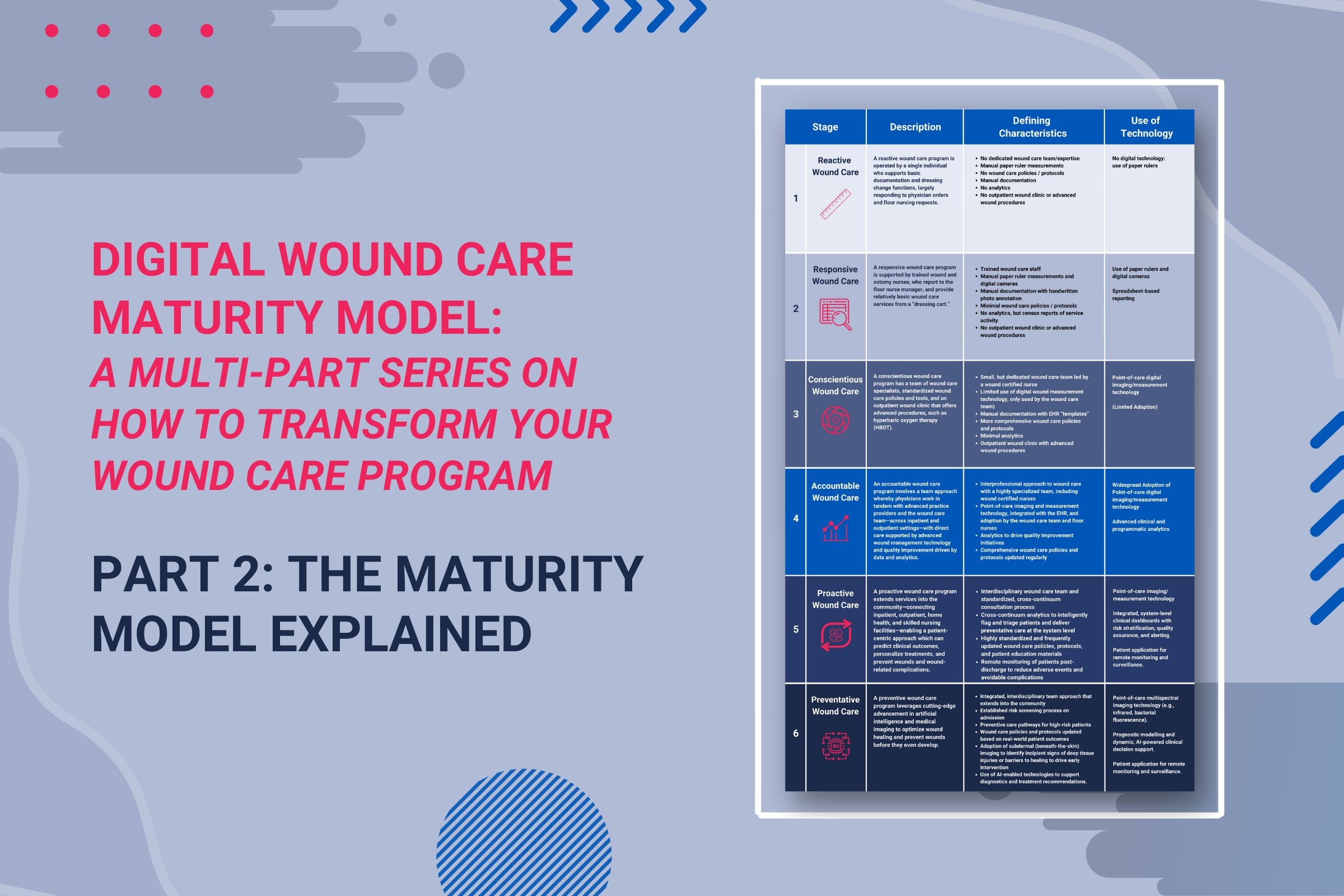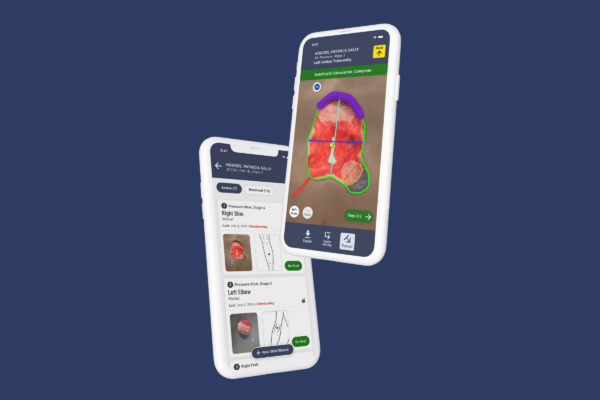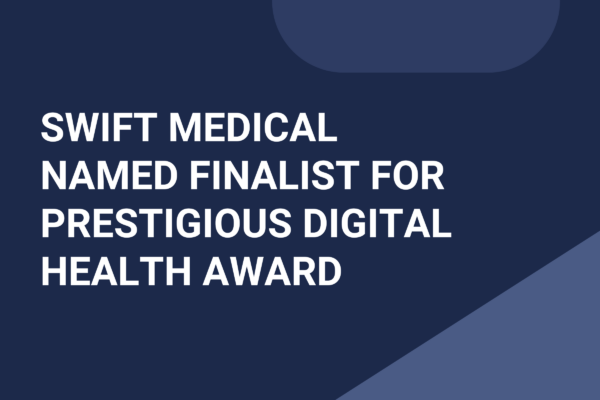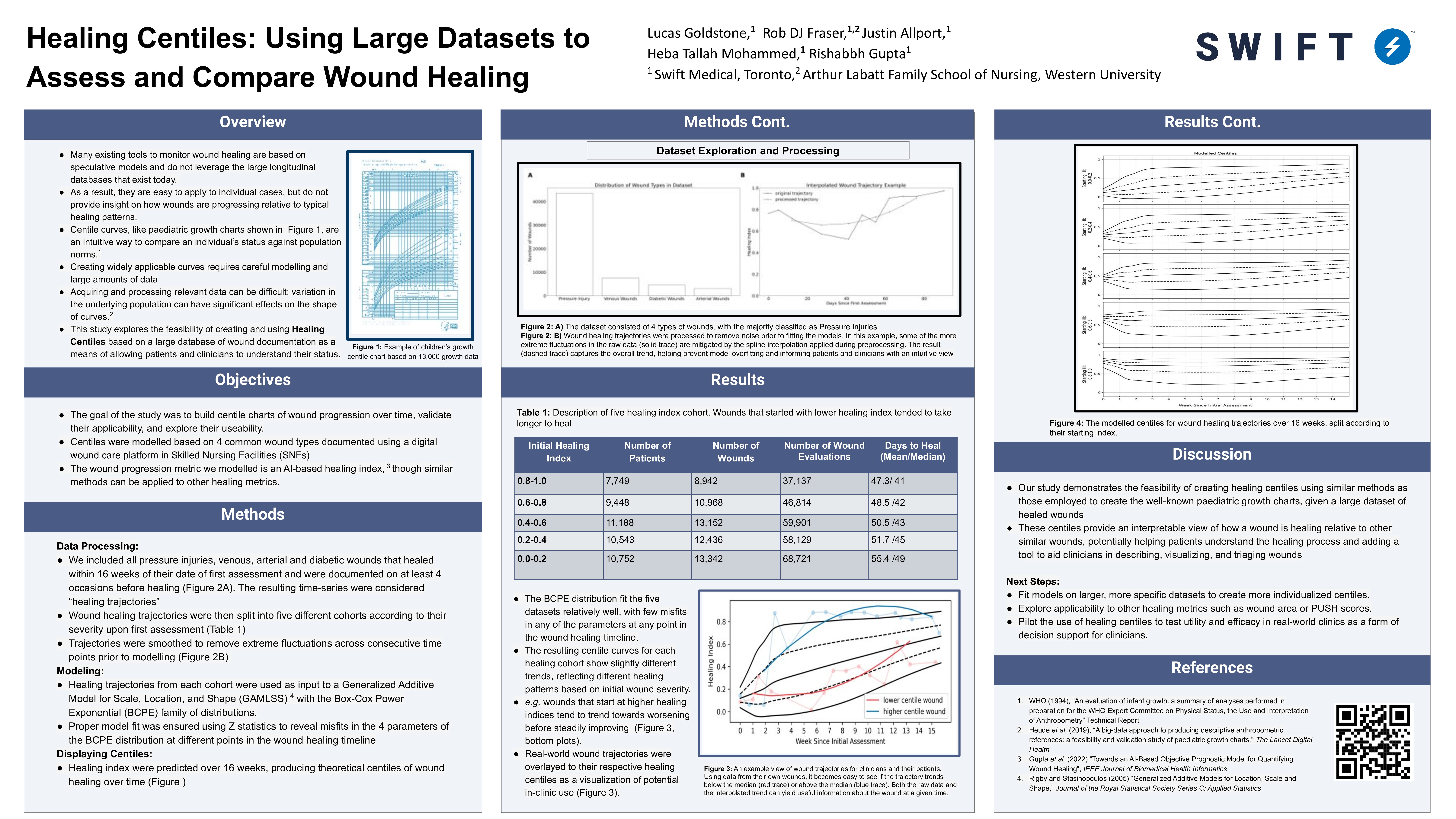Welcome to Swift Medical’s multi-part series: The Hospital Digital Wound Care Maturity Model.
What is the Digital Wound Care Maturity Model?
Wounds likely pose a far greater risk to your hospital than you realize. While they often don’t receive the same level of attention as cancer or heart failure, their impact can be even more profound.The Digital Wound Care Maturity Model is used to help understand the current-state of a hospital’s wound care program in order to guide the development of a more advanced, digitally-enabled approach going forward. The maturity model is a vendor-neutral framework designed to support the implementation and optimization of a hospital-centric wound care program. The model takes an evolutionary, staged approach to support adoption of increasingly advanced digital tools and technologies to elevate a clinical program and deliver superior clinical, operational, and economic outcomes.
In the previous entry in this series, we introduced the massive and poorly-understood wound care epidemic in hospitals.
This installment will serve as an introduction to the model itself. Over the next several entries the series will cover:
- The benefits of investing in wound care
- A framework to help you understand the current state of your program
- Multiple strategies to advance your wound care program and clinical/economic outcomes
Part 2 – The Maturity Model Explained

The Digital Wound Care Maturity Model consists of 6 stages that depict the incremental, increasing sophistication of a hospital-centric wound care program. At the lowest maturity level, Stage 1 is characterized by largely unspecialized teams, manual workflows, variable processes, a lack of technology, and limited service offerings. The result is often poor clinical and financial outcomes. At the highest maturity level, Stage 6 is characterized by an interdisciplinary team approach, ingrained best practices, and adoption of innovative digital technologies, which enable a highly standardized, preventive wound care program that leads to improved clinical and financial outcomes.
The table below provides a more detailed overview of each stage.
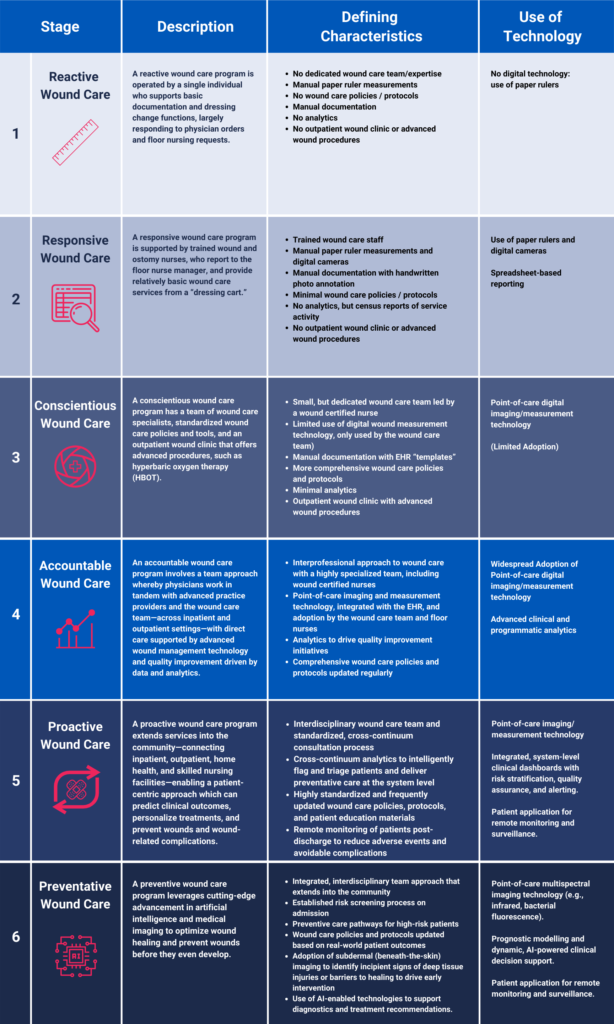
Most hospital wound care programs find themselves somewhere between stages 1-3. While these stages correlate with suboptimal wound program performance, progressing to a higher stage of maturity is not as daunting as it may seem at the outset. Advances in digital wound care technology, especially in the fields of AI and advanced imaging, have never been more accessible and affordable.
In the next installment of the series we discuss some strategies for assembling a multidisciplinary, high-performing wound team.
Sign up for our mailing list to get notified directly of new blog posts.

